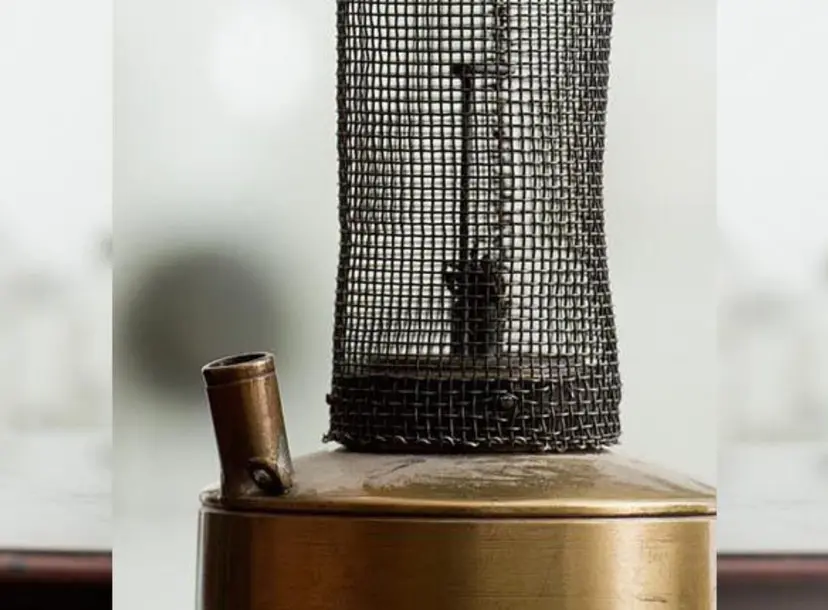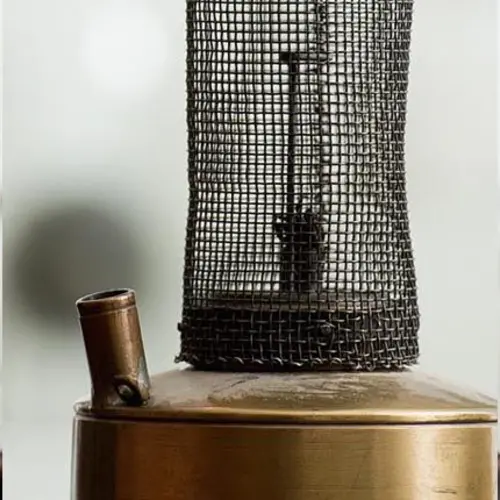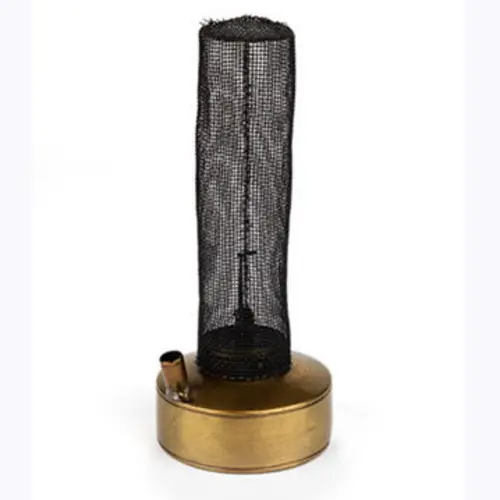Date: October - December 1815
Place made: Basement Laboratory of the Ri
Alternative name: Gauze safety lamp
Materials: Copper alloy, iron

Description
Following a number of serious explosions in North East coal mines due to pockets of flammable gas known as 'firedamp', Humphry Davy was asked by the Rector of Bishopwearmouth (near Newcastle) to find a means of lighting coal mines safely. In an intense period of work from mid-October to December 1815, Davy made various prototype lamps. The final design was very simple: a basic lamp with a wire gauze chimney enclosing the flame. The holes let light pass through, but the metal of the gauze absorbs the heat. The lamp is safe to use because the flame can't heat enough flammable gas to cause an explosion, although the flame itself will change colour.
The lamp was successfully tested in Hebburn Colliery in January 1816 and quickly went into production. The introduction of the lamp had an immediate effect, decreasing the number of fatalities per million tons of coal produced enormously and also increased the amount of coal produced as it allowed miners to mine deeper seams of coal. In this way it made a fundamental contribution to the continuing industrialisation of Britain and to many other mining countries, during the nineteenth century.
At precisely the same time however, George Stephenson, a mining engineer at Killingworth Colliery, was also working on the problem. He independently invented a remarkably similar lamp and soon the two inventors were locked in a bitter dispute over priority. Davy needed to differentiate his lamp from Stephenson’s and therefore claimed that his invention was the product of scientific research, despite there being very little science in it - indeed the only science in the lamp is the discovery (made independently by Davy, Stephenson and Smithson Tennant) that explosions would not pass through narrow tubes. Davy won this battle of words going on to become President of the Royal Society, while Stephenson went on to invent the first steam-powered locomotive for the railroad.
To help rubbish Stephenson’s claims Davy acquired some of his lamps to try to demonstrate how useless they were. These can be found on display alongside Davy’s prototypes in the Light Corridor area of our exhibition, on the lower ground floor.
Where can I view this?
This object is currently on display on the lower ground floor of the Royal Institution in the Faraday Museum.


